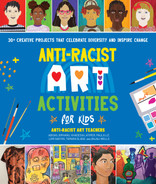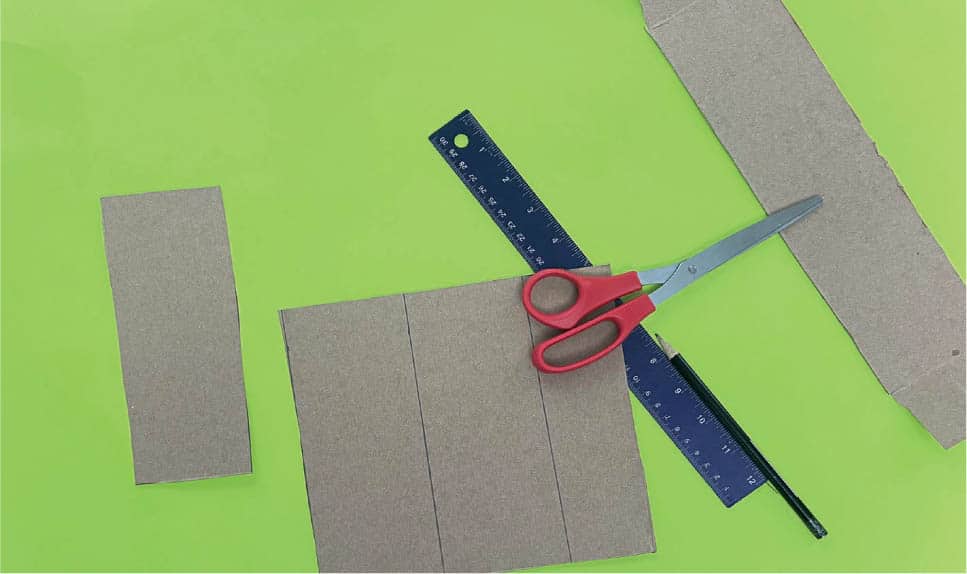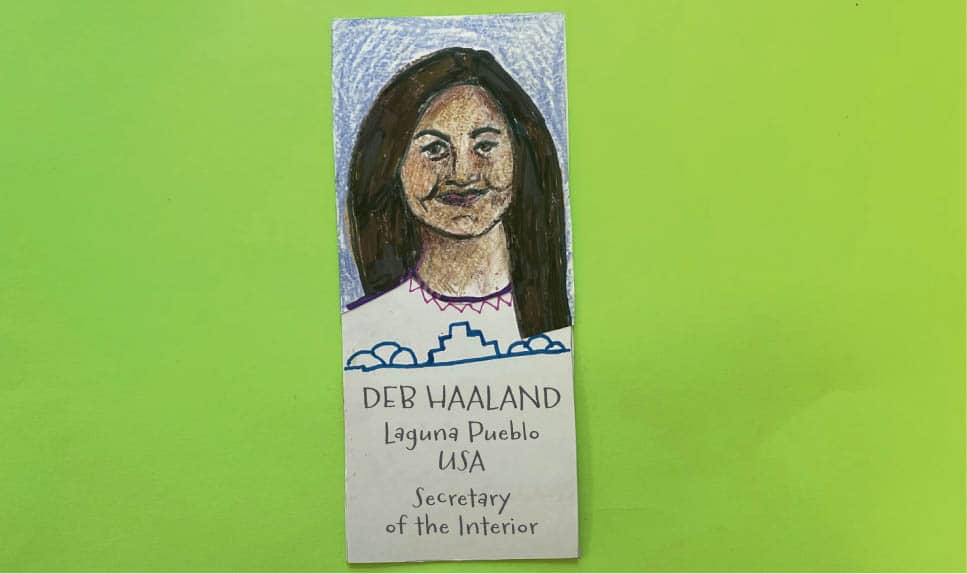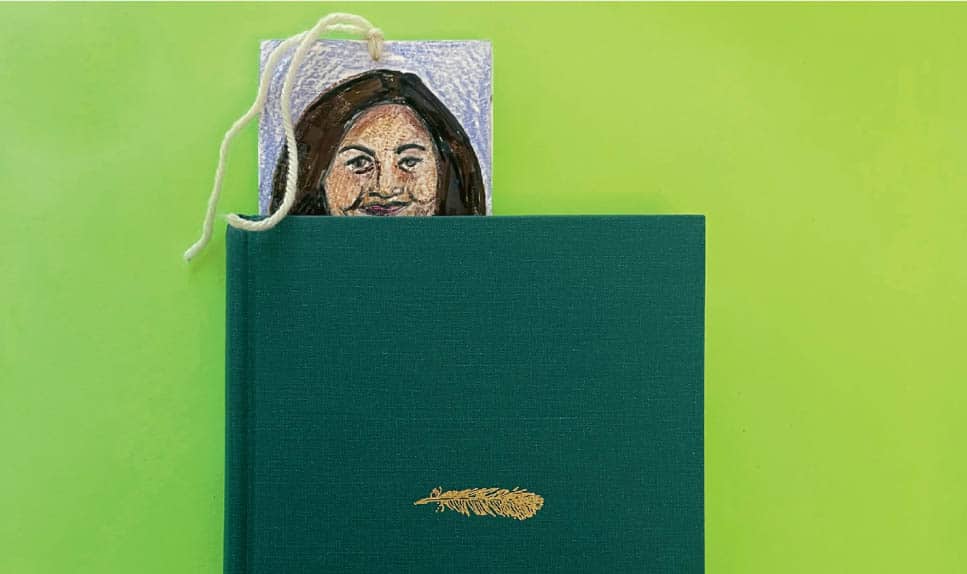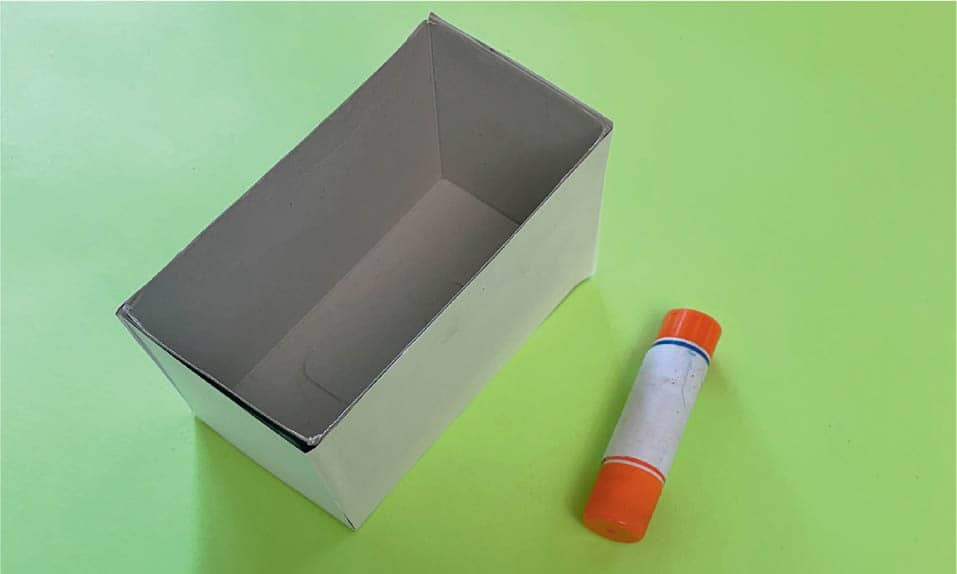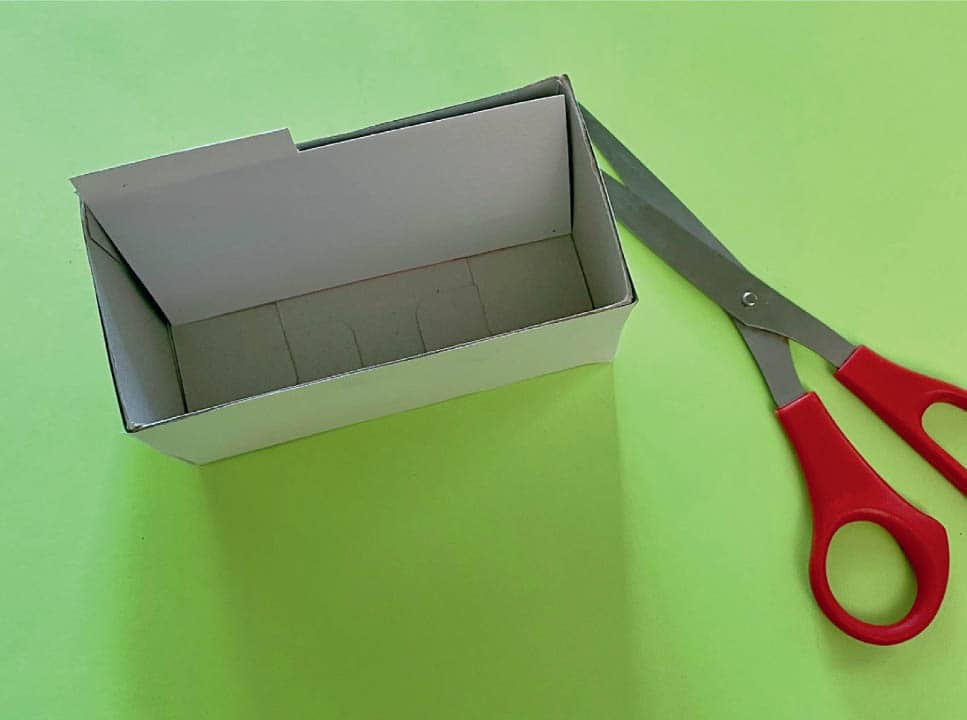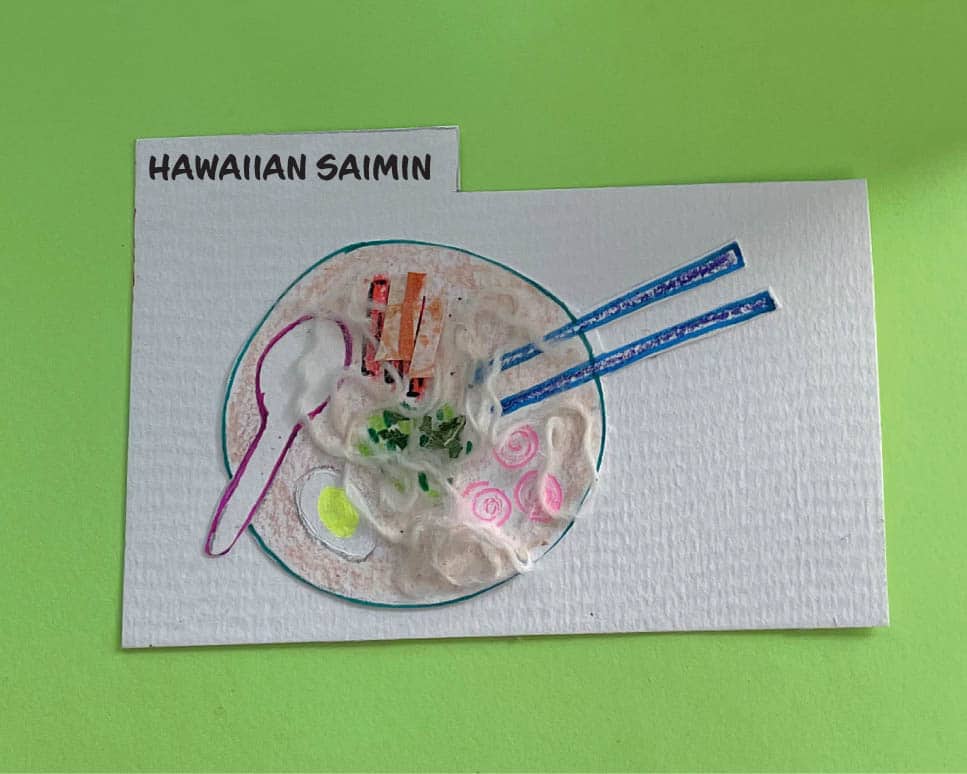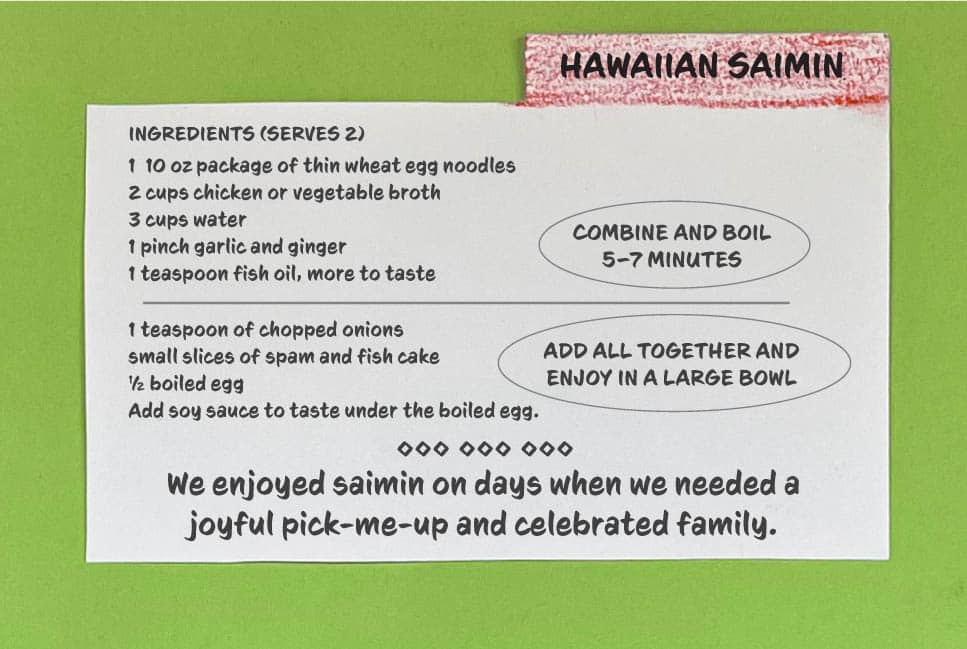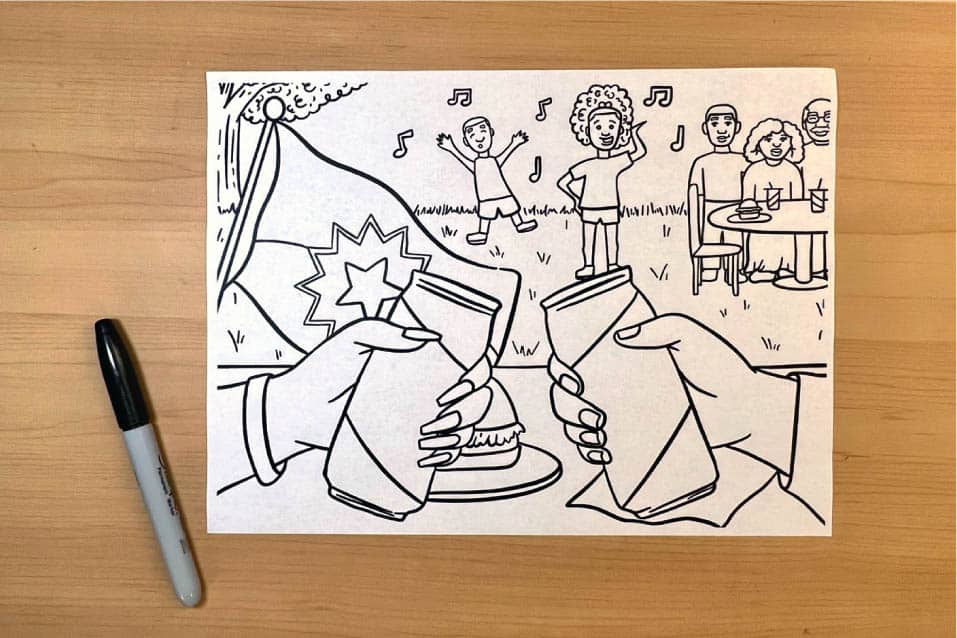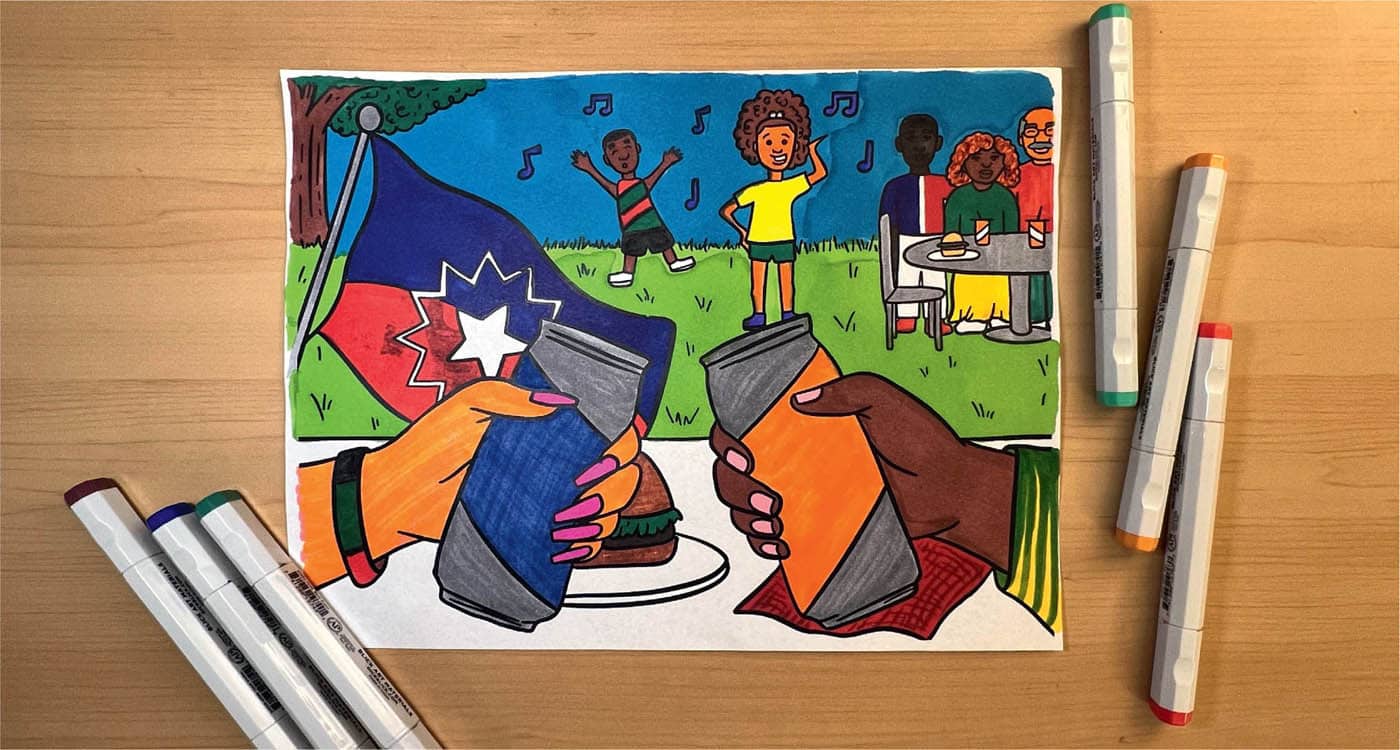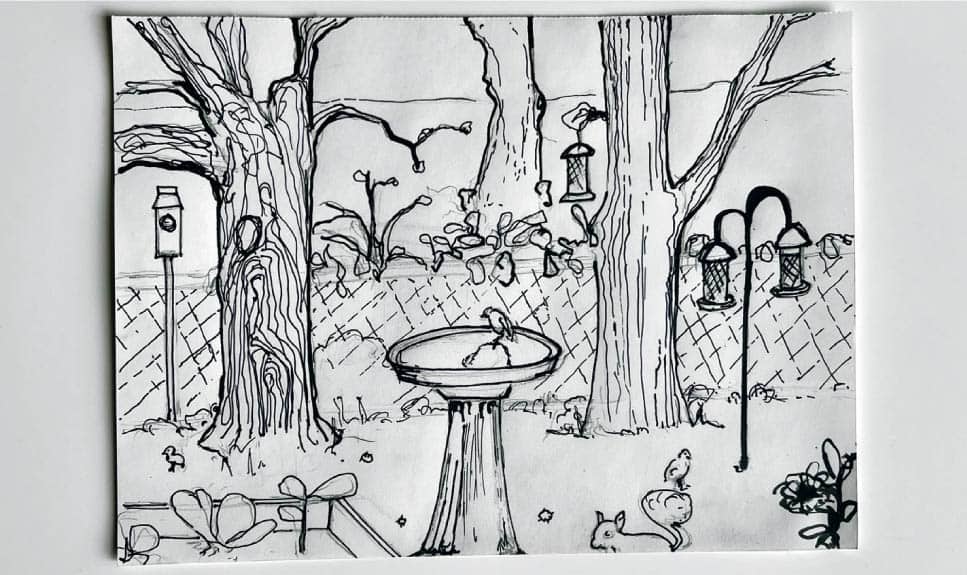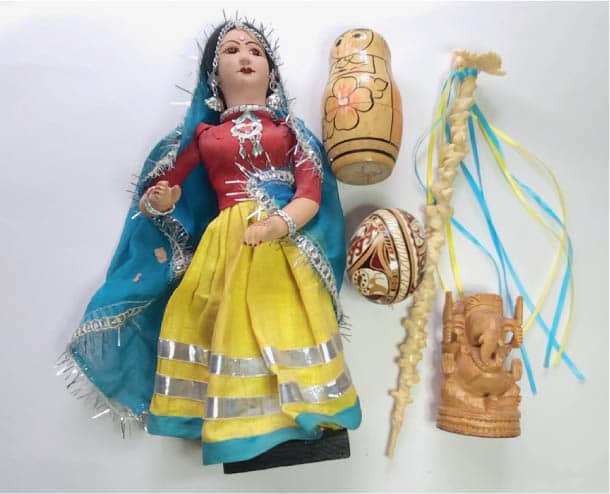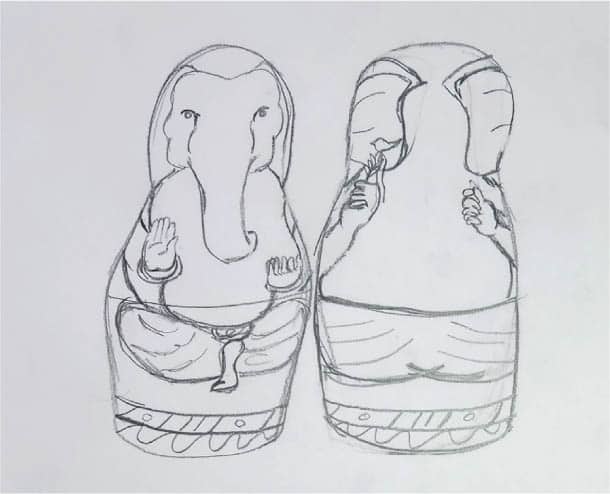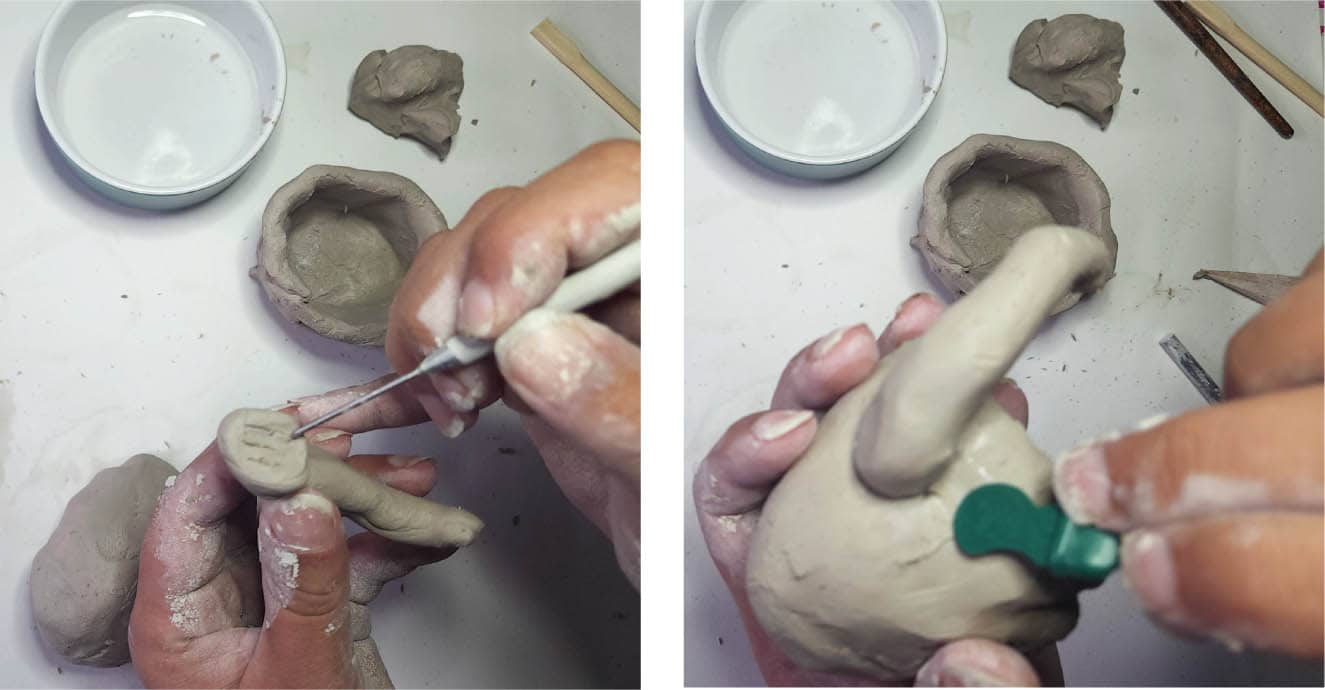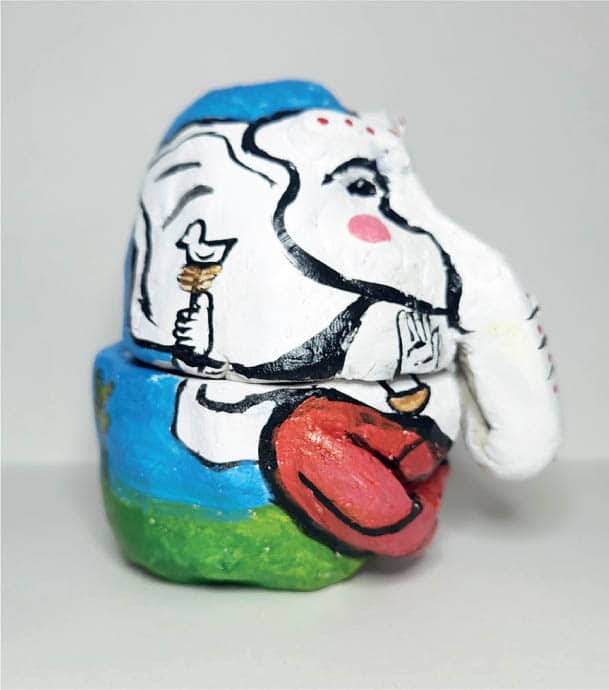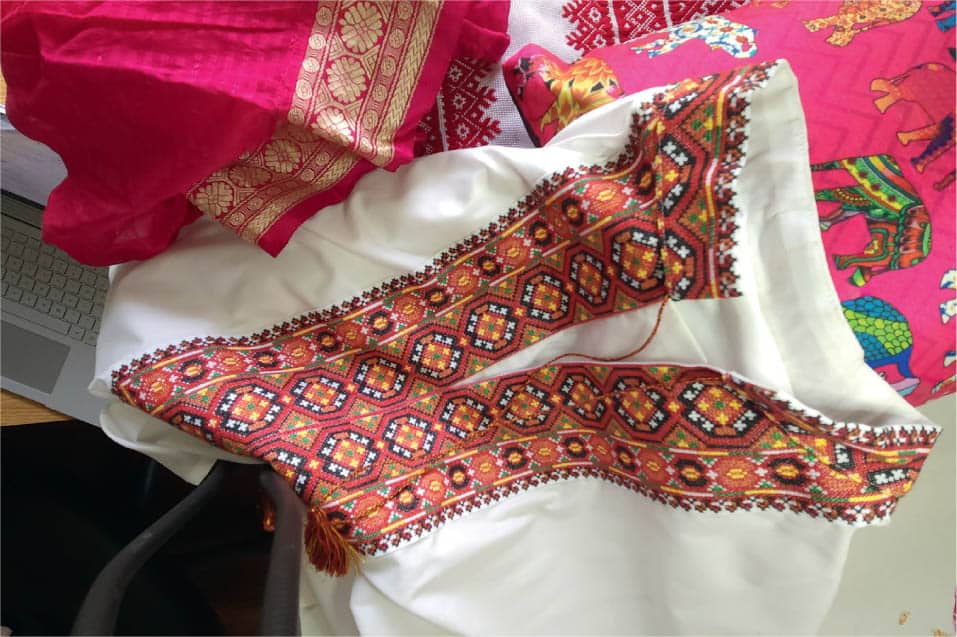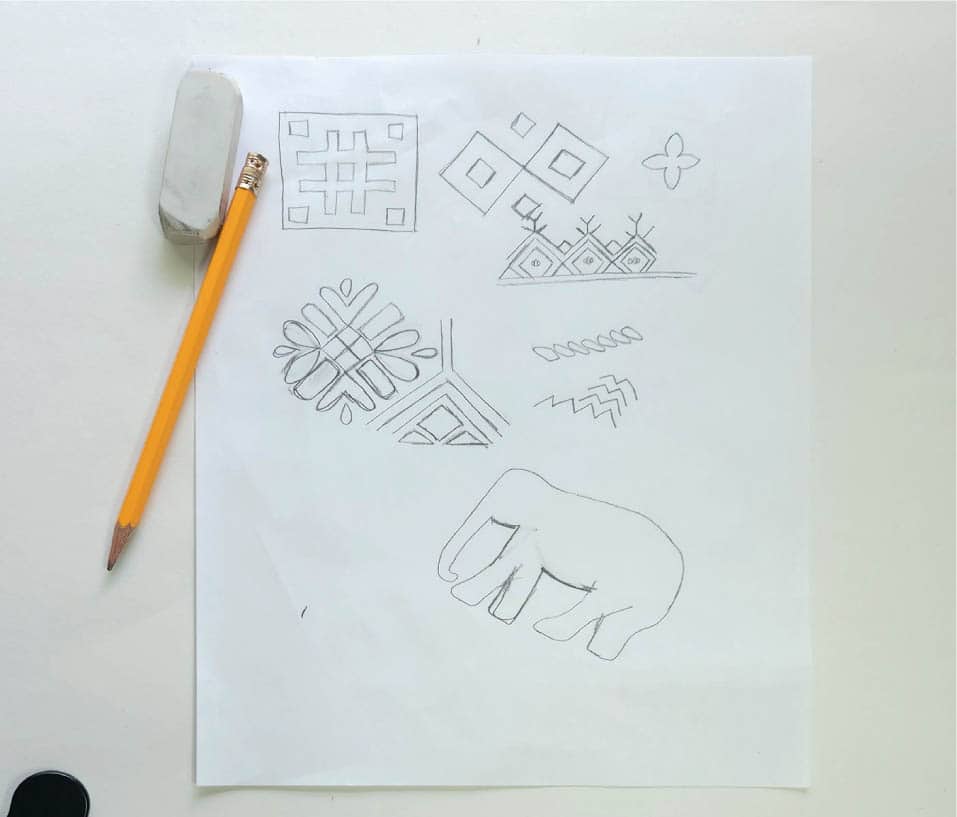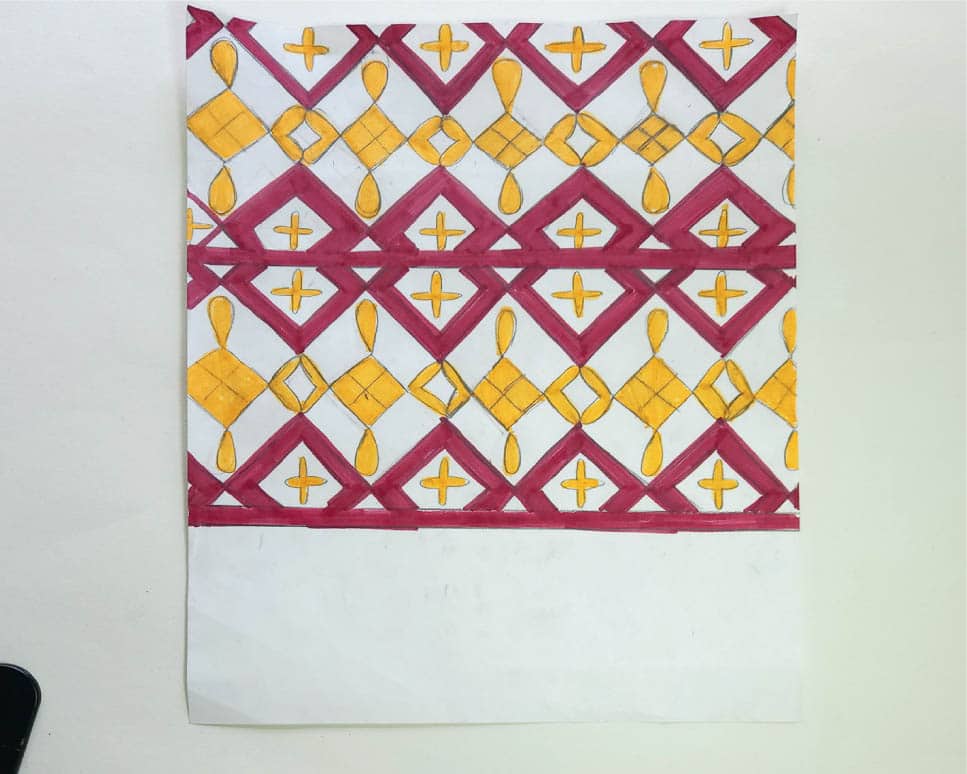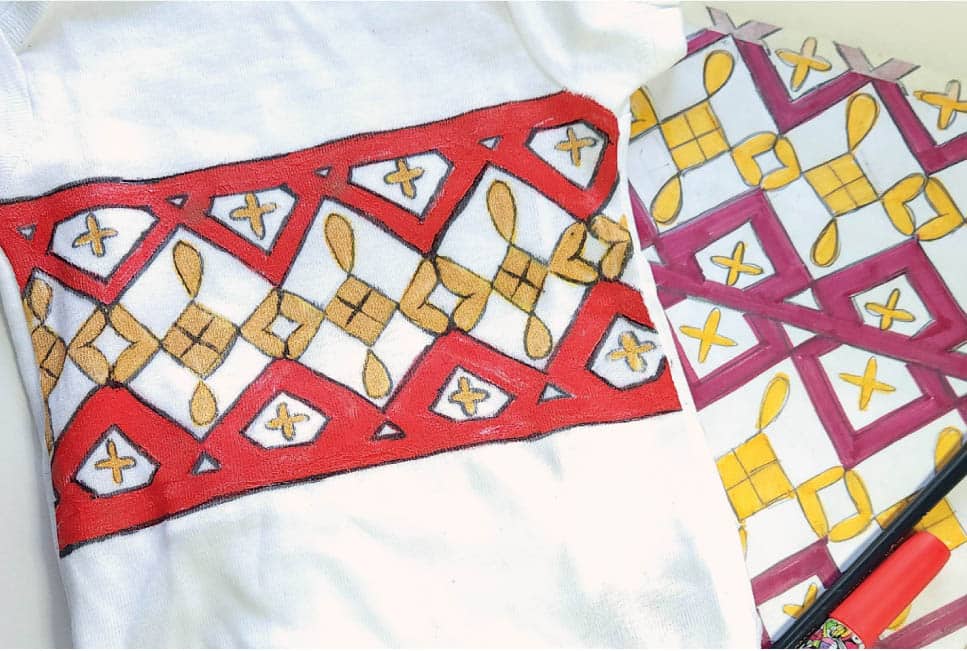In this chapter, you will be working on activities and projects that revolve around culture. Culture is the lived connection between people and their communities. It’s our memory and experiences, how we show love, and what matters most to us. Like identity, our cultures affect how we see and think of the world. Culture is personal, and when we do not respect others’ cultures, it can harm the people targeted. It is important to understand your cultures and learn about other cultures. However, it takes time for someone to get to know and understand a culture on a deeper level.
This chapter will help you explore what cultures you belong to and become comfortable explaining the things that make up your cultures. You will spend time thinking and learning about the people and history that helped shape your cultures. You will learn how your cultures are similar and different from others. You will also understand the cultures of others in a way that is honoring and respectful. Knowing and understanding your cultures is the first step to respecting other people and cultures.
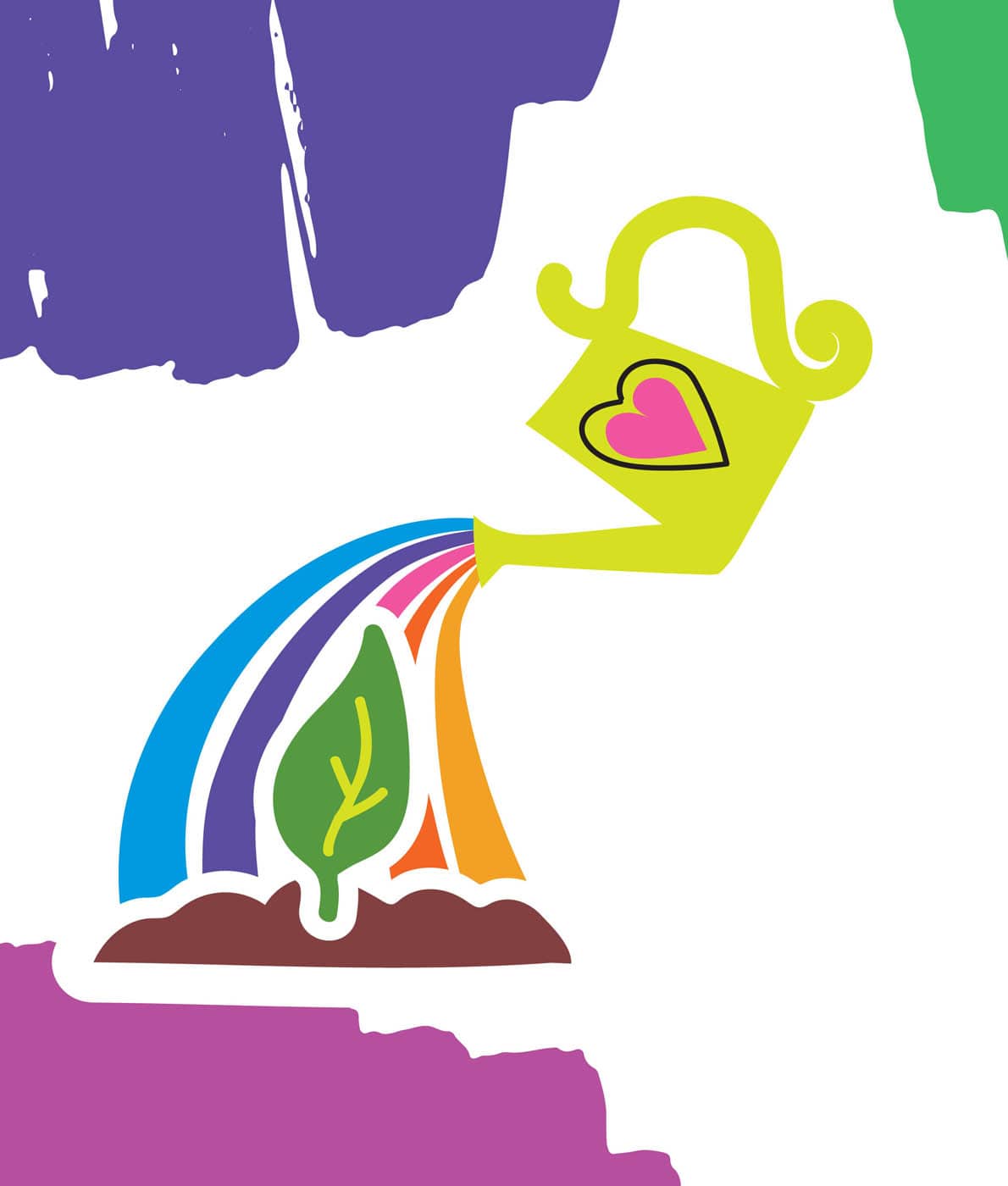
Culture that can be seen and heard is usually surface culture. For example, you can see parts of a culture through its food, celebrations, decorations, clothes, art, and even places of worship, but that does not mean you understand why and how people of that culture use and connect to these things. Culture lives in our hearts. For example, some cultures eat with their hands, some eat with chopsticks, and some eat with forks. Depending on the culture, feeding someone with your hands can be a way to show affection to a loved one or a way to show disrespect. People can see what we eat, but the cultural meaning lies in our hearts. Similarly, how we do our hair is culturally seen but holds a deeper meaning. Protective hairstyles such as braids, locs, twists, and Bantu knots are important to Black cultures. Such styles help Black people embrace their hair’s texture, protect their fragile coils and curls, and connect the Black diaspora to a heritage that was taken by colonization. Religion can also be cultural. Having a religion or not having faith is cultural. It guides how you live your life, what you feel in your heart is right and wrong, what justice means, and what you believe happens when you die. Culture exists in our minds. Much like identity, it takes time for someone to get to know and understand a culture. The expectation of who cooks is cultural. In some cultures, the kids are expected to help cook the food, while in other cultures, kids are not. Core beliefs held within a cultural group guide cultural traditions. These beliefs guide the way we celebrate or don’t celebrate events within a community or a family. Some cultures believe in wearing black at a funeral because they believe people should be sad and mourn. However, in other cultures, people wear white or think we should celebrate the life of someone who passed by remembering and honoring them with a party.



create a bookmark that celebrates an artist or person from another culture. Everyone has a culture. Cultural appropriation is taking images or ideas from another culture and using them without permission or full understanding. Instead, let’s practice cultural appreciation by learning about others through their voices to celebrate, honor, and value our differences. 1. Choose a culture you do not know much about and ask your adult to help you research to learn more. Find cultural books and resources written and created by people from the culture you are researching. 2. Cut apart the panels of the cereal box. Measure and cut the side panels into strips approximately 3 × 7 inches (7.5 × 18 cm); the size may vary. You can make more than one bookmark. Fig. 1 The strips you cut will become your bookmarks. Creating a bookmark gives you a special artwork to mark your place as you read and learn about a new culture. 3. Trace your bookmark. Cut two pieces of paper to fit the front and back. Glue the papers to the front and back of the bookmark for a clear space to create your artwork. Fig. 2 Fig. 2: Cut two pieces of paper. 4. Find an artist or historical person from the culture you researched in step 1. Create a mini portrait to honor them on your bookmark. Leave space at the bottom to include the person’s name and information to honor them. 5. Write facts about the culture and person at the bottom. What are new things you learned? What kinds of art does that culture create? Fig. 3 Fig. 3: Draw a portrait and write information about the person or culture you’re researching. 6. Think about how this artist or culture might inspire you in your art making and create a design or drawing. When creating artwork inspired by another artist, avoid copying their artwork or symbols; this is cultural appropriation. Instead, maybe you can be inspired by the colors or themes you found in their artwork. For example, I was inspired by limiting the number of colors, using bold shapes, and incorporating negative space for my bookmark. 7. Punch a hole in the top of your bookmark. Thread a piece of yarn or ribbon through the hole and tie a knot. You can also add a bead or make a tassel. Fig. 4 Fig. 4: Add yarn or ribbon. Share your bookmark. 8. Show appreciation for the culture you studied by sharing your bookmarks with friends or leaving them in library books. Remember, you can make more than one bookmark and research more than one culture.BOOKMARKING CULTURAL APPRECIATION


MATERIALS
IN THIS ACTIVITY, YOU WILL

WHY THIS MATTERS
LET’S GET STARTED!
create a collage of a special family food with a recipe to share. We all have cultural traditions in our family that we celebrate on special days. These celebrations include special foods our families love and value because they honor our culture. Creating a visual image of your special food helps you to record your memories. Recording your memories through art is a creative way to honor and share your culture with others. 1. Think of a celebration day when your family makes and eats a special food. You can look back at your identity puzzle collage for ideas on this page. 2. Find a tea box or other small box. Cut the top off. Cut and glue paper to fit the sides and wrap your box. Fig. 1, Fig. 2 Fig. 1: Cut paper to fit the box. 3. Cut card stock or an index card to fit your recipe box, and cut a 1-inch (2.5 cm) tab at the top to write the title. This will be your recipe card. Fig. 3 Fig. 3: Cut index card and title tab. 4. Draw your special food on the recipe card and color it with crayons, markers, or colored pencils. Add details by gluing magazine images, yarn, ribbon, or buttons. For example, yarn can become pasta, and buttons can be beans. Fig. 4 Fig. 4: Draw and color your special food. 5. On the back of your artwork, write the recipe for this special food. Include a memory of why this food is special to your family. Fig. 5 Fig. 5: Write your recipe on the back of your card. 6. Honor your cultural traditions by sharing your artwork and recipe with others. Ask family members to add recipe cards to your box. You can even trade recipes with friends. Extension activity: Join your friends and family to donate healthy, nonperishable food. Everyone needs to eat nutritious food. Some people have limited resources or limited access to healthy food choices. Paint a reusable bag with positive community messages, fill the bag with canned goods and dried foods, and take it to your local food bank. Donate copies of your recipes.SPECIAL FAMILY FOODS
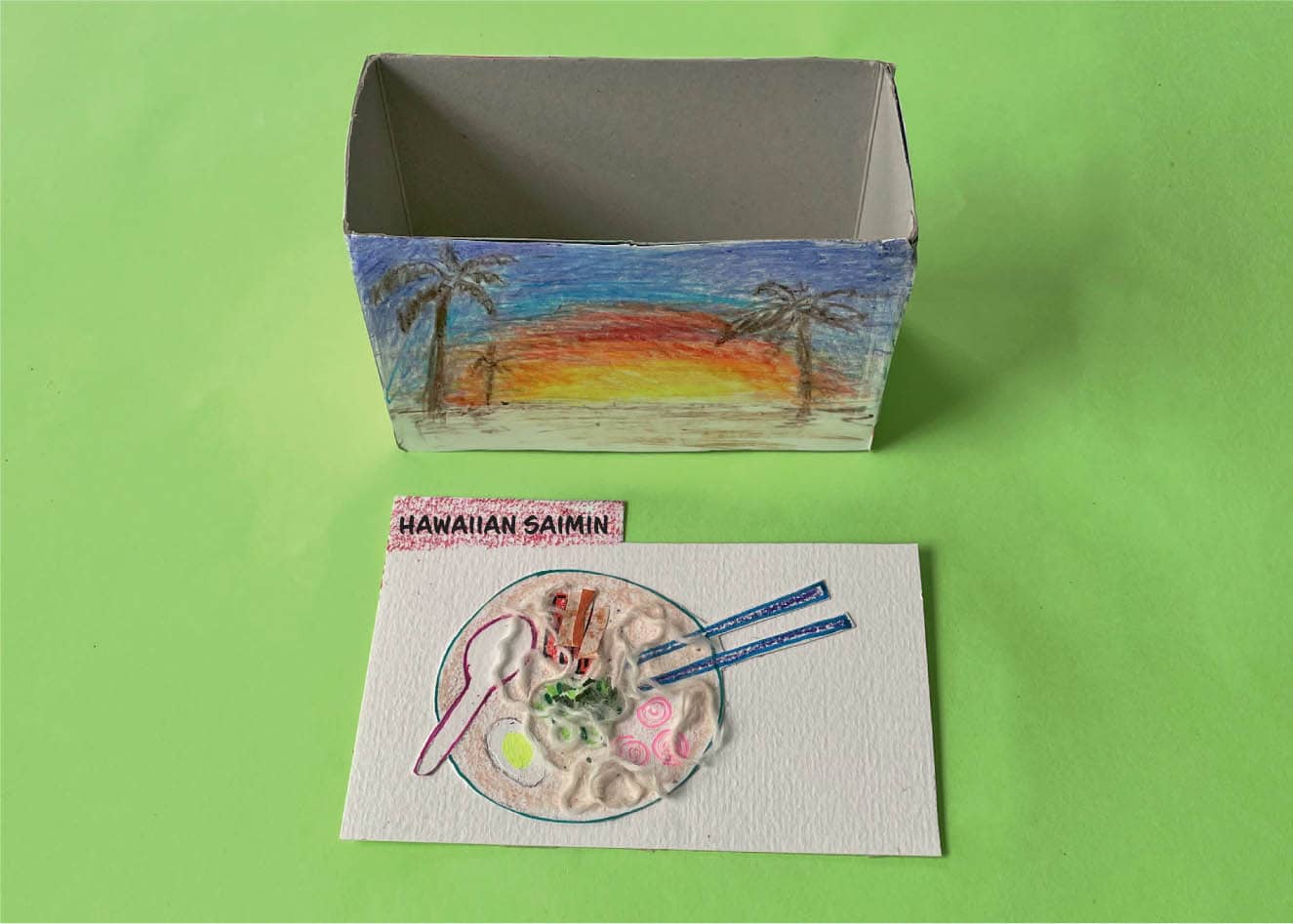

MATERIALS
IN THIS ACTIVITY, YOU WILL

WHY THIS MATTERS
LET’S GET STARTED!
create a drawing that showcases the special ways you celebrate your favorite tradition or holiday. Tradition is a custom passed down from generation to generation. Traditions are important to our culture because they help keep us connected to the past. Traditions also help us create and hold on to important memories. We must acknowledge and respect the traditions of others by recognizing their importance. Sharing our traditions and learning about the traditions of others is a great way to expand our cultural understanding. 1. Think about an important day you celebrate in a special way. What makes this day special for you? How do you dress? What do you do? Who comes to this celebration? What does the celebration place look like? 2. Using a pencil, draw your special day. Add the pieces that make this day special for you in your drawing. Fig. 1 Fig. 1: Sketch out the drawing. My example is a drawing of a Juneteenth celebration. When I celebrate Juneteenth with my family, we have a cookout where we grill our favorite foods. We also dance and listen to music. We wear Pan-African colors and fly the Juneteenth Flag. We share the history of Juneteenth and celebrate the freedom of our ancestors. 3. Using a permanent marker, trace the drawing. Fig. 2 Fig. 2: Trace it with a permanent marker. 4. Use crayons, markers, or colored pencils to add color. Fig. 3 Fig. 3: Add color. Share your drawing with someone and explain the holiday or traditions you drew. Discuss the traditions others may celebrate. How are they similar? How are they different?THE BEST DAY OF THE YEAR
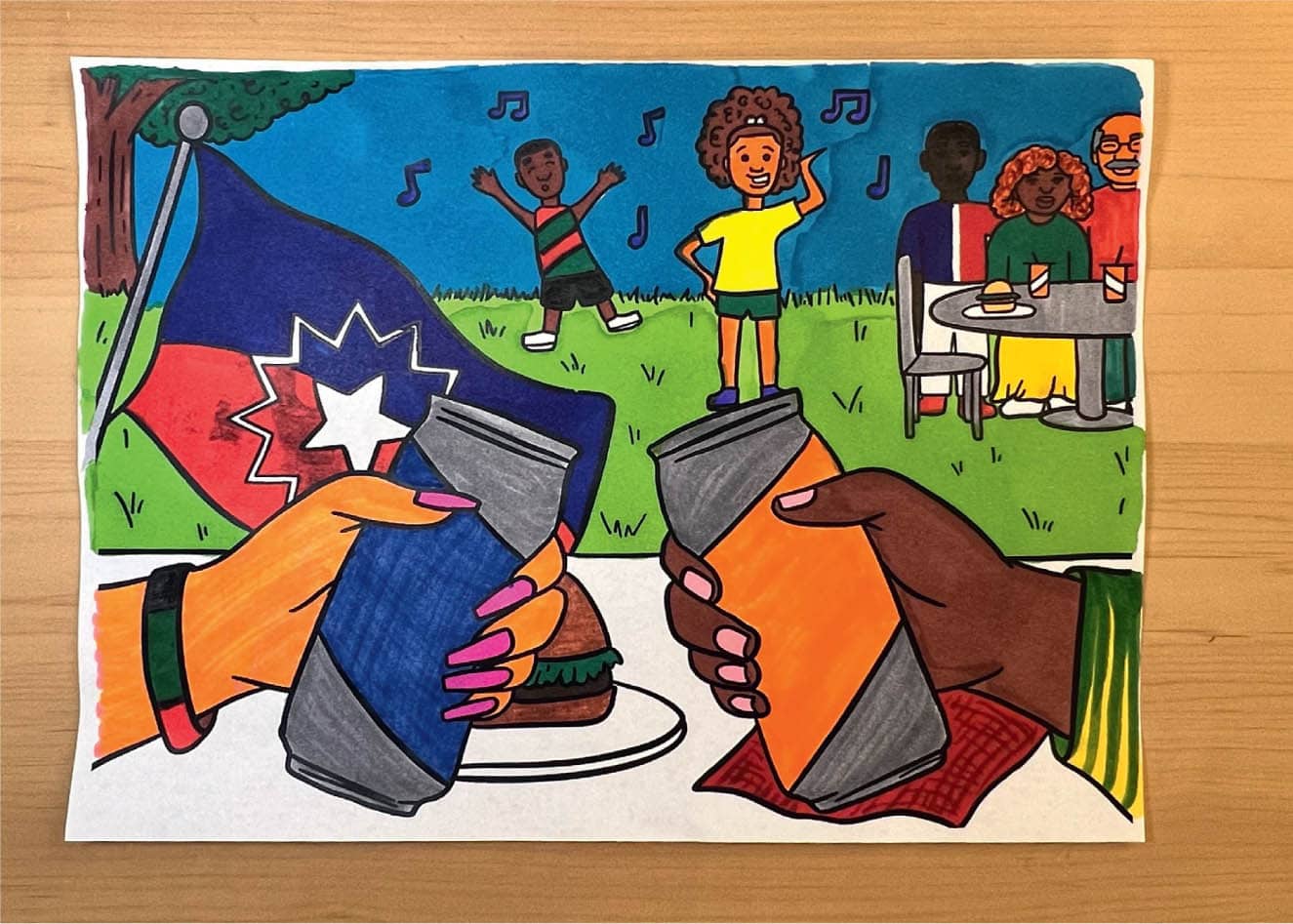

MATERIALS
IN THIS ACTIVITY, YOU WILL

WHY THIS MATTERS
LET’S GET STARTED!
find inspiration in literati landscape paintings from China (also known as wenrenhua) to create an expressive landscape that shows what you see, hear, smell, and feel in an outdoor environment. A landscape is a drawing or painting of the outdoors. Literati is a type of ink painting from China that expresses a landscape. Expressive paintings show art through the artist’s personality. Literati artists capture what it feels like to be in a place through pictures of the sights, sounds, and smells they interpret. One of the ways we can be anti-racist is by valuing one another’s cultures and understanding that diverse cultures see and interpret the world in various ways. What we find beautiful or visually meaningful is known as aesthetics and is based on our unique individual cultures. We can learn so much from artists of various cultures because we all have beautiful aesthetics. There is no ideal aesthetic, but rather many to learn from worldwide. 1. Look up examples of literati paintings and research the history. How are they special from other landscapes you have seen? The point is not to copy the literati style but to create your own landscape that captures the scenery by considering what you see, hear, smell, and feel in that space. 2. Go to a park, backyard, or outdoor space. Take some time to think about how you feel in that environment. Draw what you hear, see, feel, and smell. Feel free to move things around on your paper to create a drawing that captures the things that are important to you in that environment or the things you notice most. Fig. 1 Fig. 1: Draw your landscape environment. For example, I drew how I loved hearing the birds in my backyard. Even if the birds moved around or I could not see the details, I drew the ones I could and could not see. I also moved some of the trees around to make them look more pleasing to me. Add ink or permanent marker on top of your lines. 3. Add color using watercolor pencils or any other materials. Fig. 2 Fig. 2: Add color using watercolor pencils. 4. Use a paintbrush to add water to and blend the watercolor pencils. Add watercolor paints to create more vibrancy in your landscape. Fig. 3 Fig. 3: Blend colors by adding water or use watercolors to add additional color. Remember, we are finding inspiration in literati paintings. Your artwork does not have to look exactly like what you see and can be your interpretation. You can create your own aesthetic by choosing the colors, lines, shapes, and textures you like. For example, your sky can be a beautiful purple, even though it might look blue in reality.EXPRESSIVE LANDSCAPES
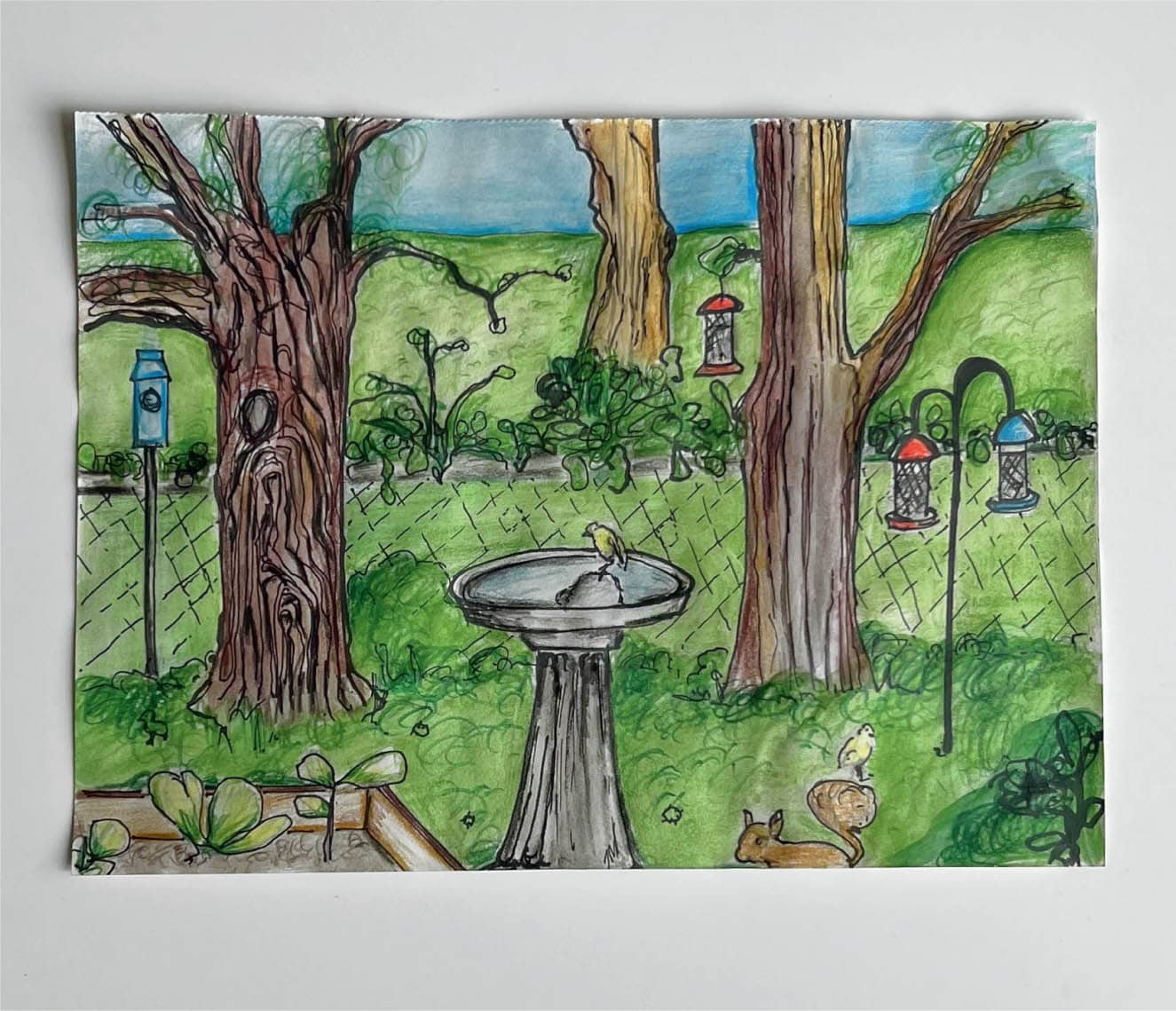

MATERIALS
IN THIS ACTIVITY, YOU WILL

WHY THIS MATTERS
LET’S GET STARTED!
create a sculpture that features your family’s history, culture, and traditions. Objects carry meaning, and we can learn about cultures from their created items. Important people, animals, symbols, patterns, and colors are used on all kinds of objects to share a culture’s values and beliefs. It is important to recognize objects in our lives that capture our cultural history and think about what we want to remember and leave for future generations, creating a legacy or passing on cultural wealth. 1. Look around for cultural objects. A cultural object might be something you use during a holiday, put around your home as decoration, or use for a spiritual purpose. This object is traditionally made by members of your cultural group. Think about the meaning and purpose of these items in your culture. How are they used by members of your family or people of your culture? Fig. 1 2. Think about an object you can create that communicates an important person, animal, belief, or practice from one or more of your cultures. What will the purpose of the object be? What kind of design, images, and colors will it have on the outside? On the inside? Get inspiration from the cultural objects around you and draw your ideas on your paper. Fig. 2 Fig. 2: Create a sketch for a cultural object. 3. Use air-dry clay to sculpt your cultural object. You can use your hands, sculpting tools, or household objects to help you reshape the clay. Use a tool to carve any designs into the clay’s surface. Fig. 3 Fig. 3: Sculpt your cultural object out of clay. 4. You can also use clay tools to attach and smooth the pieces together so there is no separation between them. Fig. 4 Fig. 4: Attach pieces by scoring, slipping, and smoothing them together. 5. Once your sculpture is dry, use paint to add color and details to your cultural object’s design. Consider incorporating imagery that includes patterns you often see in your culture, decorations hanging up in your house that represent what is important to you, traditions, and holidays you celebrate. What imagery can you pull in from these objects as you design the surface of your cultural object? Fig. 5 Fig. 5: When your sculpture is dry, paint on details. 6. Think about what your object communicates about your culture or cultures. How did you represent the ideas and beliefs of those cultures? Would your object be used for a specific purpose within one of your cultures? How might you display and use your cultural object?TRANSGENERATIONAL OBJECTS


MATERIALS
IN THIS ACTIVITY, YOU WILL

WHY THIS MATTERS
LET’S GET STARTED!
create a textile design inspired by your home and culture. Textiles are a type of cloth that includes all fabrics, from clothes to rugs and even artwork. Textiles have important roles in our lives, from being used for everyday comfort to protection from the weather. Through their design, textiles can share important aspects of our culture. Textiles can also communicate individuality, membership in cultural groups, and personal interests. 1. Go on a textile scavenger hunt in your home. Gather scarves, blankets, pillows, clothes, or textile objects related to your culture. Research images online if you do not have any textiles related to your culture. Fig. 1 2. Draw some of the designs you see on the textiles. Fig. 2 Fig. 2: Draw some of the designs you see on the textiles. 3. Choose two or more images to create a textile design representing you and your culture. Draw your textile design on paper. Add color to your design. Fig. 3 Fig. 3: Design your textile with color. 4. Think about what type of textile you want to create your design on, such as an old T-shirt, pillowcase, or piece of cloth. You want to make sure what you choose does not already have a design and that the item’s color is not too dark. 5. Transfer your design to your textile by shading the back of your paper with a pencil. Tape your drawing onto your textile and trace over your design, pressing the pencil onto your textile. Fig. 4 Fig. 4: Transfer your design onto your textile. 6. Use fabric paint or markers to complete your textile design. Fig. 5 Fig. 5: Add color to your textile design with fabric paint or markers. 7. Think about how you will use your textile. How does your design honor your culture? How can you share your culture with others through your textile? As you reflect on how important your culture is to you through your textile, it is important to acknowledge how others express themselves and show pride in their culture through their textiles.THE FABRIC OF ME!


MATERIALS
IN THIS ACTIVITY, YOU WILL

WHY THIS MATTERS
LET’S GET STARTED!
